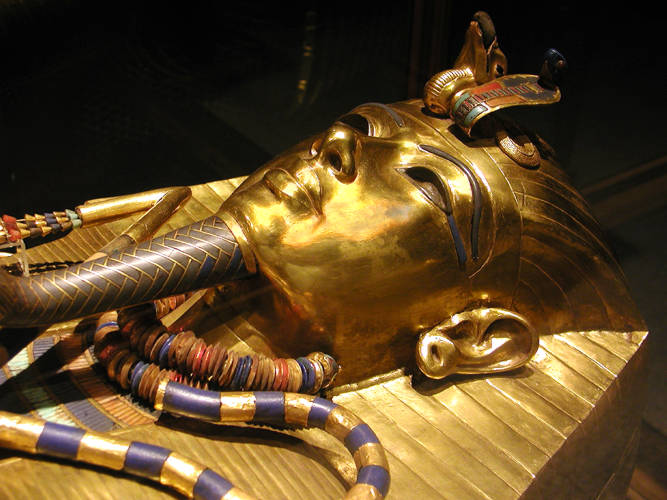
I've had fun today looking into the latest arguments over the mummy of Tutankhamun. The pharaoh died young, aged around 19, so there's been plenty of speculation over what killed him since his mummy was first unwrapped in 1922.
Murder - by a blow to the back of the head or by poison - has been suggested. And signs of broken leg led to the idea that he fell from his chariot during a hunting accident.
Egypt's chief archaeologist Zahi Hawass and colleagues recently carried out an extensive scientific investigation of Tut's mummy as well as several others from his family (all captured on film of course for an accompanying TV documentary). They reported in JAMA earlier this year that he probably died from a debilitating bone disorder, combined with an attack of malaria.
But a letter just published in JAMA suggests that sickle cell disease is a more likely explanation. You can read more about this in this news story I've written for New Scientist today.
This letter was just one of several comments published this week on Hawass's work. One of them urges caution over the DNA results from the mummies, suggesting that contamination could have crept in. Another challenges the identification of mummy KV55 as Akhenaten, Tut's father.
But the letter that I was most intrigued by suggests that Tutankhamun and family, including Akhenaten, may have suffered from a hormonal disorder that given them elongated skulls, and caused the men to develop breasts. This would explain why artwork of the time depicts Tutankhamun, Akhenaten and others with long heads and feminine figures (just type "Akhenaten" into a Google image search and you'll see what I mean).
A key piece of evidence in this debate is King Tut's penis, which it turns out has been broken away from his body. It's also impossible to check whether Tut had breasts, because the front of his chest is missing. Is this a cover-up? You can read more on what I found out in a blog post here...